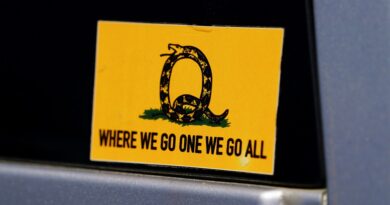Explainer: What is QAnon? How a wild conspiracy theory led to the storming of the US Capitol
Several prominent supporters of the extremist movement were spotted inside the building.
Allegedly among those was “QAnon Shaman” Jacob Anthony Chansley.
Chansley was arrested yesterday. Authorities believe he is the man wearing a painted face, fur hat and horns; whose picture has since become synonymous with the riots.
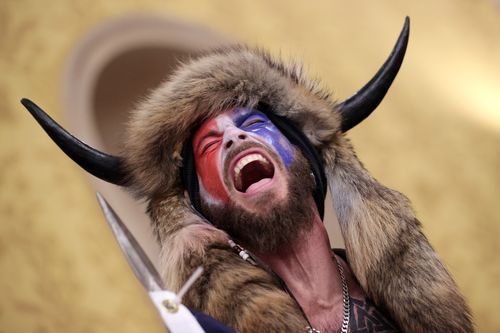
So, what is QAnon?
QAnon all stems from a completely unfounded conspiracy theory about a global “Deep State” cabal of satanic pedophile elites.
According to the believers, President Donald Trump is waging a secret war against the Satan-worshipping paedophiles in government, business and the media.
QAnon believers have been anticipating a day of reckoning led by Mr Trump, when thousands of members of the cabal will be arrested, including prominent Democrats such as Hillary Clinton and Hollywood celebrities
QAnon followers have also falsely claimed Robert Mueller’s inquiry into Russian interference in the 2016 US election was really an elaborate cover story so he and Mr Trump could work together to expose paedophiles.
How did it all start?
In October 2017, someone put up a post on the message board 4chan.
The user claimed to have a level of US security approval known as “Q clearance” and signed off with the letter Q.
Q claimed to have access to classified information involving the Trump administration and its opponents in the US.
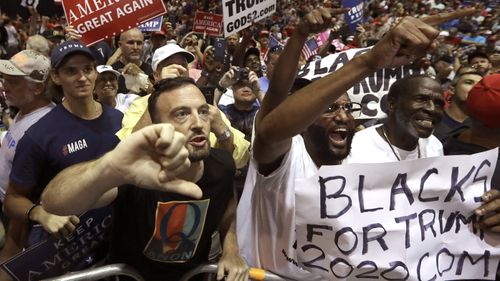
Three people then took the original Q post and spread it across multiple media platforms, according to NBC News.
What does Trump have to say about QAnon?
QAnon adherents began appearing at Trump re-election campaign rallies in August 2018.
While Mr Trump has never officially endorsed the conspiracy theory, he has described QAnon activists as “people who love our country” and said he appreciates their support.
“I know nothing about it,” Mr Trump said of QAnon movement in a televised Town Hall event last October.
“I do know they are very much against pedophilia. They fight it very hard, but I know nothing about it,” he added.
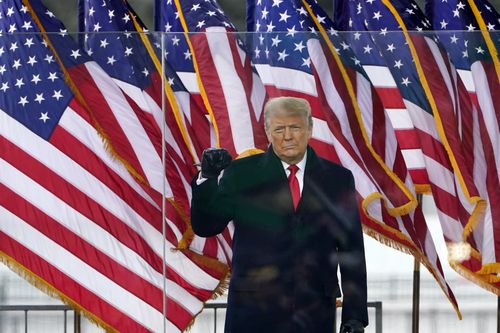
The president’s response was met with jubilation online from QAnon followers who saw it as a ringing endorsement.
Mr Trump has, whether knowingly or not, retweeted QAnon supporters many times.
Before the election his son Eric Trump posted a QAnon meme on Instagram.
More wild QAnon conspiracy theories
To delve into the world of QAnon is to go down a rabbit role of outlandish, and often contradictory, conspiracy theories.
Many of the prophecies put forward by QAnon followers never came to pass, but that has seemingly done little to dissuade the true believers.
The Atlantic executive editor, Adrienne LaFrance, wrote an in-depth analysis of the movement called “The Prophecies Of Q.”
LaFrance said many QAnon believers were obsessed with John F. Kennedy Jr. – who was killed in a plane crash in 1999.
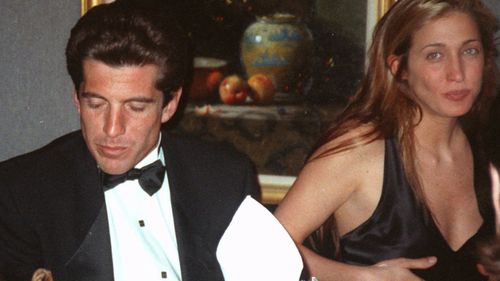
“One idea is that he didn’t actually die in a plane crash but rather that Hillary Clinton had him killed because she was a political opponent,” LaFrance said.
“Another idea is that he faked his own death and is actually alive and a secret Trump supporter.
“For a while, people were saying that he was going to reveal himself as Trump’s running mate in this presidential election.”
Unsurprisingly, layer upon layer of fabrications have been weaved into QAnon’s messaging around the coronavirus.
At one point, many QAnon believers were fixated on a yellow tie Mr Trump wore to some of his coronavirus briefings, LaFrance said.
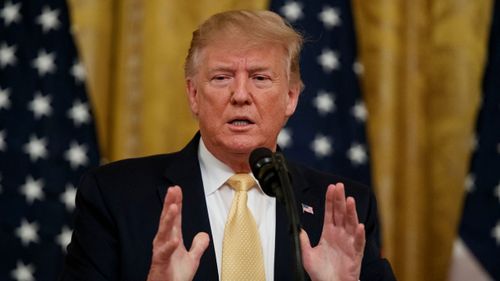
“(At) one of President Trump’s daily briefings in the spring at a time when the death toll was really spiking, President Trump wears a yellow tie.
“And people seize on this in the Q crowd and say that yellow is a colour that, in maritime flags, signifies an all-clear. And therefore, the yellow tie is a signal that everything is OK and the virus isn’t real.”
How many people believe in this stuff?
While the conspiracy theories forming the basis of QAnon may sound ridiculous and far-fetched, its audience is growing rapidly.
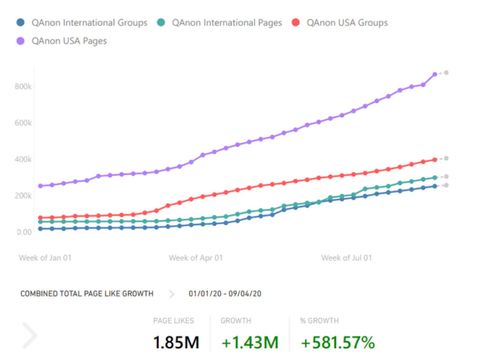
“The COVID-19 pandemic has played a significant role in popularizing the QAnon movement,” Mr Argentino wrote.
“Facebook data since the start of 2020 shows QAnon membership grew by 581 per cent — most of which occurred after the United States closed its borders last March as part of its coronavirus containment strategy.”
*** This article has been archived for your research. The original version from 9News can be found here ***

